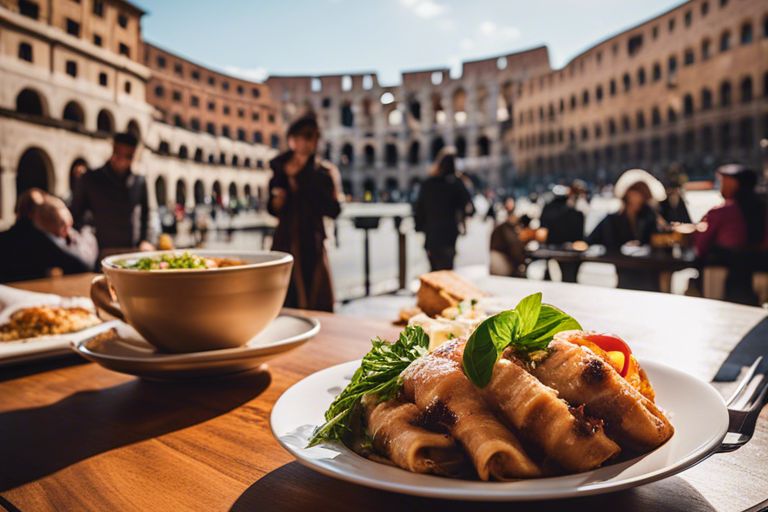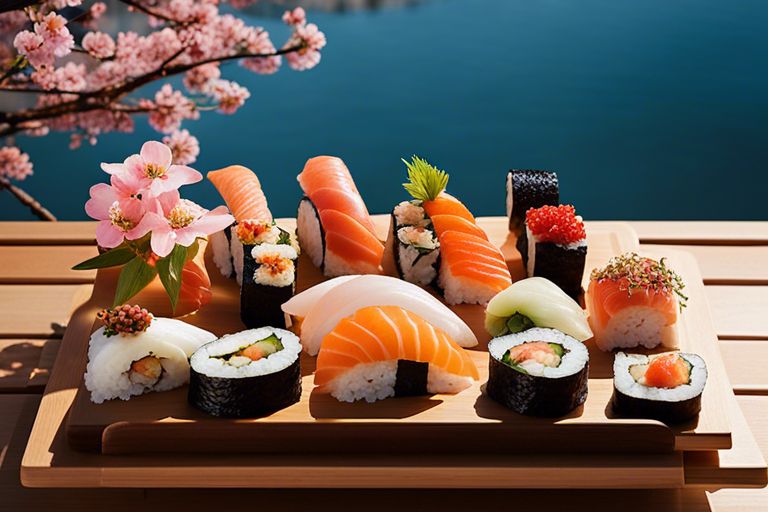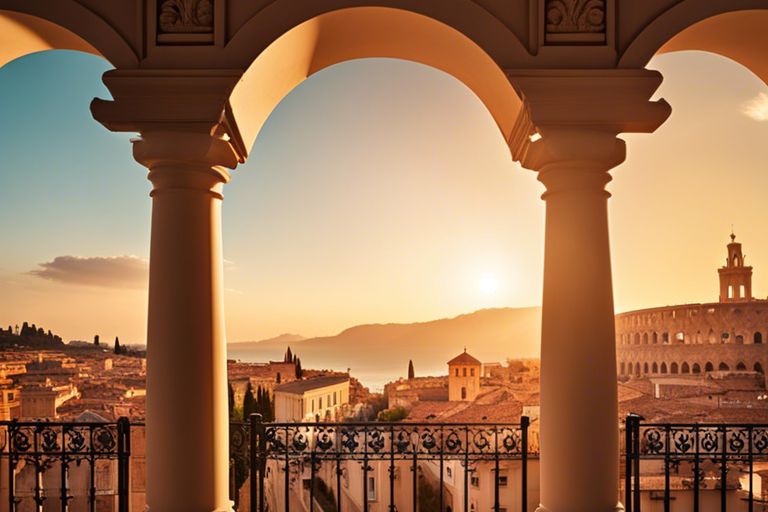Welcome to ‘A Foodie’s Guide to Rome,’ where we will take you on a culinary journey through the vibrant streets of the Eternal City. Rome is not only known for its ancient history and stunning architecture but also for its mouth-watering cuisine. From crispy supplì to creamy cacio e pepe, Rome offers a plethora of delectable dishes that will tantalise your taste buds. In this guide, we will explore the must-try Roman delicacies, the best local eateries, and the hidden gems off the beaten path. Get ready to indulge in authentic Italian flavours and discover why Rome is a paradise for food lovers. Let’s examine the culinary delights that await you in the heart of Italy’s capital.
Key Takeaways:
- Vibrant Food Scene: Rome offers a vibrant food scene with delicious traditional dishes.
- Local Markets: Explore the local markets to discover fresh produce, cheeses, and meats.
- Must-Try Dishes: Indulge in classic Roman dishes like Carbonara, Cacio e Pepe, and Supplì.
- Hidden Gems: Seek out hidden gems such as family-run trattorias and gelaterias for authentic culinary experiences.
- Wine and Coffee Culture: Enjoy the city’s rich wine and coffee culture with a variety of options to satisfy your palate.
Types of Roman Eateries
When visiting Rome, it’s crucial to explore the diverse eateries that the city has to offer. From traditional trattorias to bustling street food markets, there is no shortage of delicious options to choose from. To help you navigate the culinary landscape of Rome, here is a breakdown of the different types of Roman eateries.
| Trattorias | Osterias |
| Piazza Navona | Campo de’ Fiori |
| Testaccio | Trastevere |
| Classic Roman dishes | Local wines |
| Relaxed atmosphere | Family-run |
| Affordable prices | Traditional recipes |
Trattorias and Osterias Explained
Trattorias are casual, family-owned restaurants that serve traditional Roman dishes in a relaxed atmosphere. They are known for offering affordable prices and authentic flavours. On the other hand, osterias are more focused on serving local wines alongside traditional recipes. They are usually family-run establishments found in quaint neighbourhoods like Trastevere and Campo de’ Fiori.
Street Food and Markets
Street food vendors and markets play a vital role in Rome’s culinary scene, offering a wide range of delicious and affordable options. From supplì (fried rice balls) to panini stuffed with cured meats, these street food delights are perfect for a quick and flavourful bite on the go. Markets like Mercato di Testaccio and Campo de’ Fiori are bustling hubs where locals and tourists alike flock to sample fresh produce, cheeses, and delicious snacks.
Street food and markets are not only convenient but also provide an authentic glimpse into Rome’s cuisine culture. Whether you’re in the mood for a quick snack or looking to immerse yourself in the vibrant food scene of the city, exploring these eateries is a must for any foodie visiting Rome. Recognizing the importance of experiencing Roman cuisine in all its forms is crucial for truly appreciating the culinary treasures that the city has to offer.
Tips for the Traveling Foodie
Exploring the culinary scene in Rome can be an exciting and rewarding experience for any food lover. To make the most of your gastronomic adventure, here are some vital tips for the travelling foodie:
- Research: Before your trip, research popular local dishes and restaurants to ensure you don’t miss out on any must-try delicacies.
- Explore: Venture off the beaten track to discover hidden gems and authentic eateries where the locals dine.
- Indulge: Don’t be afraid to try new dishes and flavours – immerse yourself in the rich culinary heritage of Rome.
- Stay Hydrated: With all the delicious food to sample, remember to stay hydrated by drinking plenty of water throughout the day.
Perceiving the Roman food culture with an open mind and adventurous palate will enhance your culinary journey and create lasting memories.
Navigating Menus in Rome
When dining out in Rome, you may encounter menus written in Italian, which can be daunting for non-Italian speakers. However, most restaurants in tourist areas offer menus in multiple languages, so don’t hesitate to ask for an English version. Additionally, familiarise yourself with common Italian culinary terms such as ‘antipasti’ (starters) and ‘primi piatti’ (first courses) to navigate the menu with ease.
Another tip is to seek recommendations from waitstaff or locals, who can provide insights into the best dishes on the menu or off-menu specials. This personal touch adds a special flair to your dining experience and ensures you savour the finest flavours Rome has to offer.
Seasonal Delights and What to Look for
Seasonality plays a significant role in Italian cuisine, with each season bringing its own unique produce and flavours. When in Rome, keep an eye out for seasonal delights such as artichokes in spring, juicy tomatoes in summer, wild mushrooms in autumn, and citrus fruits in winter. Embracing seasonal ingredients not only guarantees freshness but also allows you to experience authentic Roman dishes at their best.
Exploring local markets such as Campo de’ Fiori and Mercato di Testaccio will give you a glimpse into the seasonal produce available and inspire you to create your own Italian-inspired dishes using the freshest ingredients.
Step-by-Step Guide to a Roman Food Adventure
Exploring Rome through its food is an experience like no other. From traditional pasta dishes to mouth-watering gelato, the city offers a culinary journey that should not be missed. To make the most of your Roman food adventure, follow this step-by-step guide.
| Planning Your Culinary Itinerary | Sampling the Best of Rome: A Daily Breakdown |
|
1. Research popular Roman dishes and food markets before your trip. |
Day 1: Start your day with a classic Italian breakfast of cornetto (croissant) and espresso. |
|
2. Book a food tour or cooking class to immerse yourself in Roman cuisine. |
Day 2: Dive into carbonara for lunch at a local trattoria. |
Planning Your Culinary Itinerary
When planning your culinary itinerary in Rome, consider booking a food tour that takes you to the city’s hidden culinary gems. These tours often include visits to local markets, authentic eateries, and family-run restaurants, giving you a taste of the real Rome. Additionally, make reservations in advance for popular restaurants to avoid disappointment.
Sampling the Best of Rome: A Daily Breakdown
Each day in Rome presents a new opportunity to indulge in the city’s culinary delights. Start your mornings with a freshly brewed espresso and a cornetto (Italian croissant) at a local cafe. For lunch, try a classic carbonara or amatriciana pasta dish at a traditional trattoria. In the evenings, explore the diverse neighbourhoods of Rome, each offering a unique dining experience from quaint family-run trattorias to trendy rooftop bars.
Exploring Rome’s food scene on a daily basis allows you to fully appreciate the variety and depth of Italian cuisine. Be open to trying new dishes and flavours, and don’t forget to pair your meals with a glass of Italian wine for a complete culinary experience.
Factors to Consider When Eating Out in Rome
When dining out in Rome, there are several factors to take into consideration to ensure an enjoyable and safe culinary experience. From the location and timing of your meals to your dietary restrictions and allergies, it is important to be well-prepared to make the most of your dining adventures in the Eternal City.
Location and Timing
Choosing the right location and meal times can greatly impact your dining experience in Rome. Popular restaurants in touristy areas may offer picturesque views but can be overpriced and lack authenticity. Opt for eateries frequented by locals to savour traditional Roman dishes at more reasonable prices.
Dietary Restrictions and Allergies
Regarding dietary restrictions and allergies, communicating your needs clearly to the waitstaff is necessary. Italian cuisine is known for its use of cheese, wheat, and seafood, so if you have specific dietary requirements, it is crucial to inform the restaurant in advance.
Perceiving the seriousness of dietary restrictions and allergies, restaurants in Rome are becoming more accommodating and are willing to adapt their dishes to meet the needs of their customers. However, it is always wise to double-check with the staff to avoid any mishaps that could ruin your dining experience.
Pros and Cons of Roman Dining Options
| Pros | Cons |
| Wide variety of authentic Roman dishes to choose from | High prices in tourist-heavy areas |
| Fresh ingredients sourced from local markets | Potential language barriers when ordering |
| Opportunity to experience traditional Roman dining customs | Service may be slow during peak hours |
| Charming atmosphere in family-run trattorias | Quality can vary between different establishments |
| Chance to try Roman street food for a quick and affordable meal | Difficulty finding a table without a reservation |
High-End Restaurants vs. Casual Eateries
When deciding between high-end restaurants and casual eateries in Rome, it’s important to consider your budget and dining preferences. High-end restaurants offer elegant surroundings and exquisite dishes prepared by top chefs. However, they often come with a hefty price tag. On the other hand, casual eateries provide a more relaxed atmosphere where you can sample delicious, authentic Roman cuisine at a more affordable price.
For a special occasion or a luxurious dining experience, high-end restaurants are the way to go. If you prefer a laid-back meal without breaking the bank, opt for casual eateries where you can enjoy hearty portions of Roman classics.
Evaluating Food Tours and Cooking Classes
Food tours and cooking classes are popular options for foodies looking to probe deeper into the culinary scene of Rome. Food tours offer the opportunity to taste a variety of dishes from different eateries while learning about the city’s food culture from knowledgeable guides. Cooking classes, on the other hand, provide a hands-on experience where you can learn to prepare traditional Roman dishes in a relaxed setting.
For a more immersive and educational experience, consider joining a food tour or signing up for a cooking class during your stay in Rome. These activities not only allow you to sample delicious food but also gain insights into the local culinary traditions.
A Foodie’s Guide to Rome
Exploring Rome through its culinary treasures is a delightful journey for any food enthusiast. With an abundance of delicious dishes, traditional eateries, and local markets, Rome offers a gastronomic experience like no other. From indulging in creamy gelato to savouring authentic pasta dishes, the city’s food scene is a true reflection of its rich history and vibrant culture. Be sure to try classic Roman specialities like cacio e pepe, supplì, and carbonara for an authentic taste of the city. With this guide in hand, your culinary adventures in Rome are bound to be a memorable and delicious experience.
FAQ
Q: What is ‘A Foodie’s Guide to Rome’?
A: ‘A Foodie’s Guide to Rome’ is a comprehensive guide that explores the culinary delights of Rome, including traditional dishes, must-visit restaurants, and hidden gems for food lovers.
Q: What are some traditional Roman dishes to try in Rome?
A: When in Rome, be sure to try traditional dishes such as Cacio e Pepe (cheese and pepper pasta), Carbonara (pasta with eggs, cheese, pancetta, and black pepper), and Supplì (deep-fried rice balls with a tomato and mozzarella centre).
Q: Which are some must-visit restaurants for foodies in Rome?
A: Foodies visiting Rome should not miss dining at renowned restaurants such as Armando al Pantheon for authentic Roman cuisine, Roscioli for delicious Roman-style pizzas, and La Pergola for a fine dining experience with panoramic views.
Q: What are some hidden gems for food lovers in Rome?
A: Food lovers in Rome should explore Testaccio Market for fresh produce and Roman street food, Trastevere for charming trattorias and gelaterias, and Campo de’ Fiori for a vibrant market atmosphere and diverse food options.
Q: How can one make the most of a foodie experience in Rome?
A: To make the most of a foodie experience in Rome, immerse yourself in the local food culture by trying different dishes, visiting both popular and off-the-beaten-path eateries, taking a food tour, and engaging with passionate local chefs and vendors.






